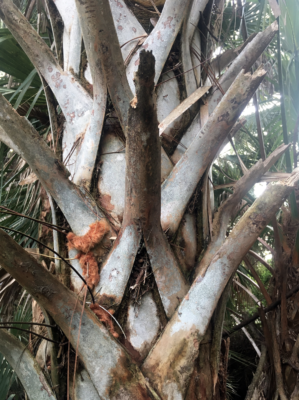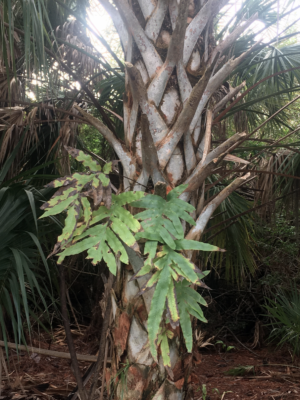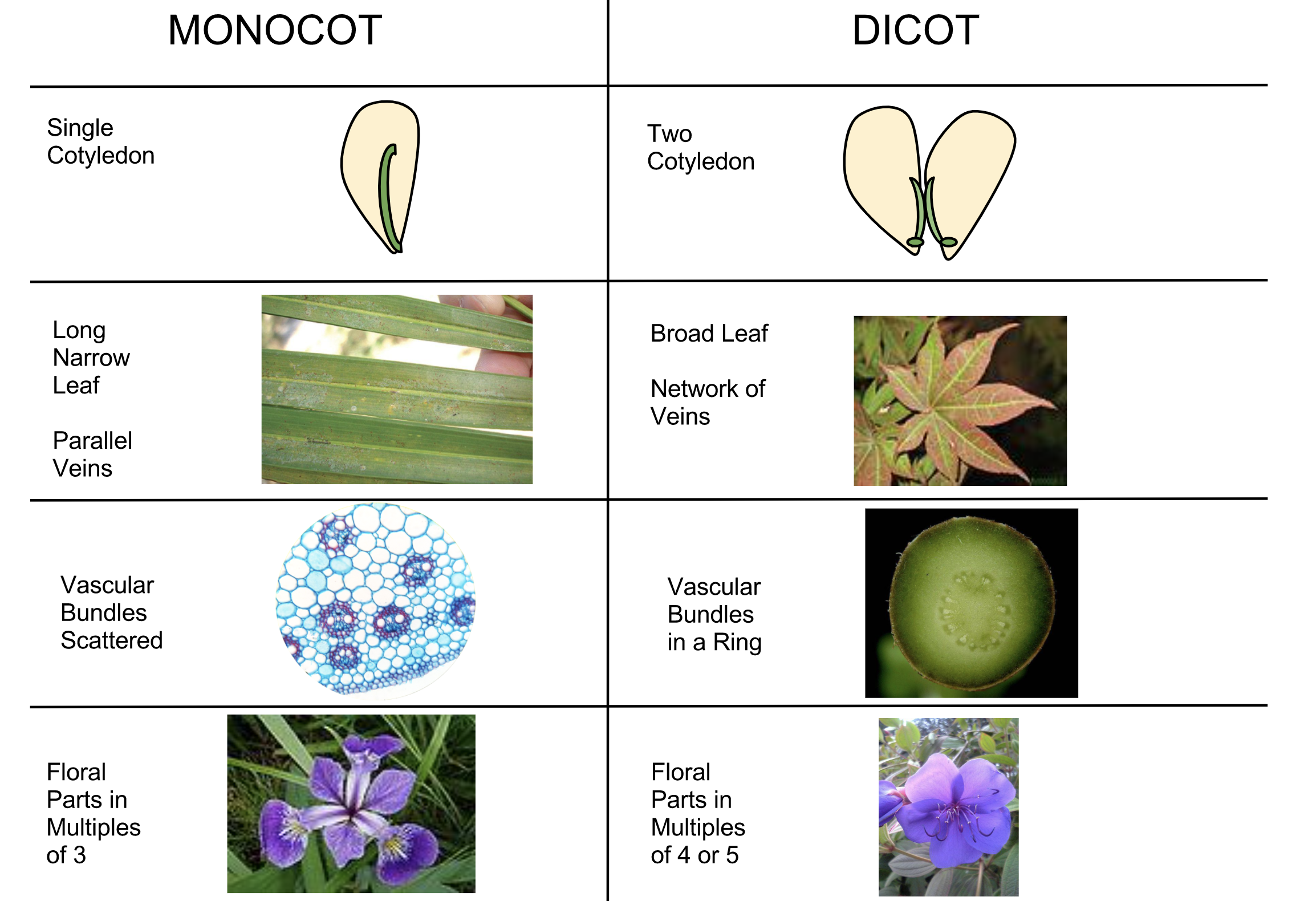
Cabbage palm boots

Golden polypody growing on cabbage palm
The official state tree of Florida since 1970, the cabbage palm, or sabal palm, (Sabal palmetto) is easy to spot in Sarasota and Manatee Counties. Sabal palmetto belongs to a class of flowering plants called the Monocotyledoneae, or “monocots.” Fellow members of the monocots include grass, corn, rice, lilies, bromeliads, and orchids.

SOURCE: https://commons.wikimedia.org/w/index.php?curid=26233760
We can find our native cabbage palms throughout the state including in pine woodlands, hammocks, and on river banks. They provide an excellent habitat and food source for wildlife including: songbirds, bats, treefrogs, anoles, squirrels, butterflies, and bees.
A distinctive feature of the cabbage palm is the criss-cross pattern on the trunk formed by “bootjacks” or “boots.” This is formed by the bases of the leaf stems (or petioles) that are left behind after the leaf blade falls.The criss-cross pattern, found on many palm trunks, is the result of 2 distinct points of attachment to the main trunk for each petiole and the overlapping of the leaf bases. The boots may naturally fall off over time, leaving behind a smoother section of the trunk. The term “boots” is likely used because they resemble bootjacks, Y-shaped tools designed to remove your boots.
Cabbage palm bootjacks are an excellent habitat for epiphytic plants. For this month’s EcoQuest, we’ll be checking those boots for the various plant species growing in them. We can see almost anything growing from and around the bootjacks. While we might expect to see native epiphytic species such as the Florida strangler fig or shoestring fern, we can also find non-epiphytic woody plants growing in the boots- even Brazillian pepper and magnolias. Birds and squirrels help disperse the seeds in the bootjacks, making these boots quite the plant nursery!
According to cabbage palm expert Jono Miller, “In addition to the inadvertent hemi-epiphytes, those with seeds that germinate in the bootjacks and must reach the ground, there are all manner of vines that ascend up palms, frequently using the remnant bootjacks as trellises.” So we’ll be on the lookout for all sorts of vines utilizing the boots as well. Ferns are also commonly seen growing from the boots, including shoestring, (Vittaria lineata) and golden polypody (Phlebodium aureum). Below is a list of commonly seen species to get you started. So get out there with us this month and Check your Boots for the incredible variety of species out there!
NOTE: When making your observations in iNaturalist, please add “growing on Sabal palmetto ” to the Notes section.
Ficus
Florida strangler fig (Ficus aurea), shortleaf fig (F. citrifolia), sacred fig (F. religiosa), banyan tree (F. benghalensis), council tree (F. altissima), weeping fig (F. benjamina)
Ferns
Shoestring fern (Vittaria lineata), golden polypody (Phlebodium aureum)
Native Vines
Virginia creeper (Parthenocissus quinquefolia), poison ivy (Toxicodendron radicans), cross vine (Bignonia capreolata), Carolina jessamine (Gelsemium sempervirens), native passion vines (Passiflora spp.), climbing aster (Symphyotrichum carolinianum), peppervine (Nekemias arborea), calusa grape (Vitis shuttleworthii), trumpet vine (Campsis radicans)
Non-native Vines
Cat’s claw (Macfadyena unguis-cati), arrowhead vine (Syngonium podophyllum) air potato (Dioscorea bulbifera), coral vine (Antigonon leptopus) rosary pea (Abrus precatorius), rubber vine (Cryptostegia madagascariensis), pothos (Epipremnum pinnatum), Chinese wisteria, (Wisteria sinensis), wax vines (Hoya spp.), flame vine (Pyrostegia venusta), creeping fig (Ficus pumila), sky vine (Thunbergia grandiflora), philodendrons (Philodendron spp.)
Trees
Umbrella tree (Schefflera actinophylla), pitch apple (Clusia rosea), magnolia (Magnolia spp.), slash pine (Pinus elliottii), live oak (Quercus virginiana), Brazilian pepper (Schinus terebinthifolius)
Cacti
Moonlight cactus (Selenicereus spp.)
WHAT IS AN ECOQUEST?
EcoQuests, part of the Sarasota-Manatee EcoFlora Project, challenge Floridians to become engaged citizens in the observation, study, appreciation, and conservation of the native flora and fauna of Florida, and understand the impacts to it by exotic species.
HOW DO I GET STARTED?
- Download the easy-to-use iNaturalist app on your mobile device, or visit iNaturalist.org on your computer.
- Set up a user account or sign in to join projects and submit observations.
- Visit the Sarasota-Manatee EcoFlora project, Check your Boots! and click “join” on the upper right.
- Photograph plants anywhere in Sarasota and Manatee Counties. Take multiple photos to show important features for identification (overall plant, leaves, flowers, fruit, stem).
- Post your observations to iNaturalist.
- Check out your ranking on this month’s challenge online!
WHAT IS THE GOAL?
Help us document the many species of plants growing on cabbage palm boots this March! Remember that any observation still contributes to the Sarasota-Manatee EcoFlora Project, even if it’s not featured in our monthly challenge.
WHERE SHOULD I LOOK?
Cabbage palms are abundant in Sarasota and Manatee counties, and can be found in pine woodlands, hammocks, and on river banks.
